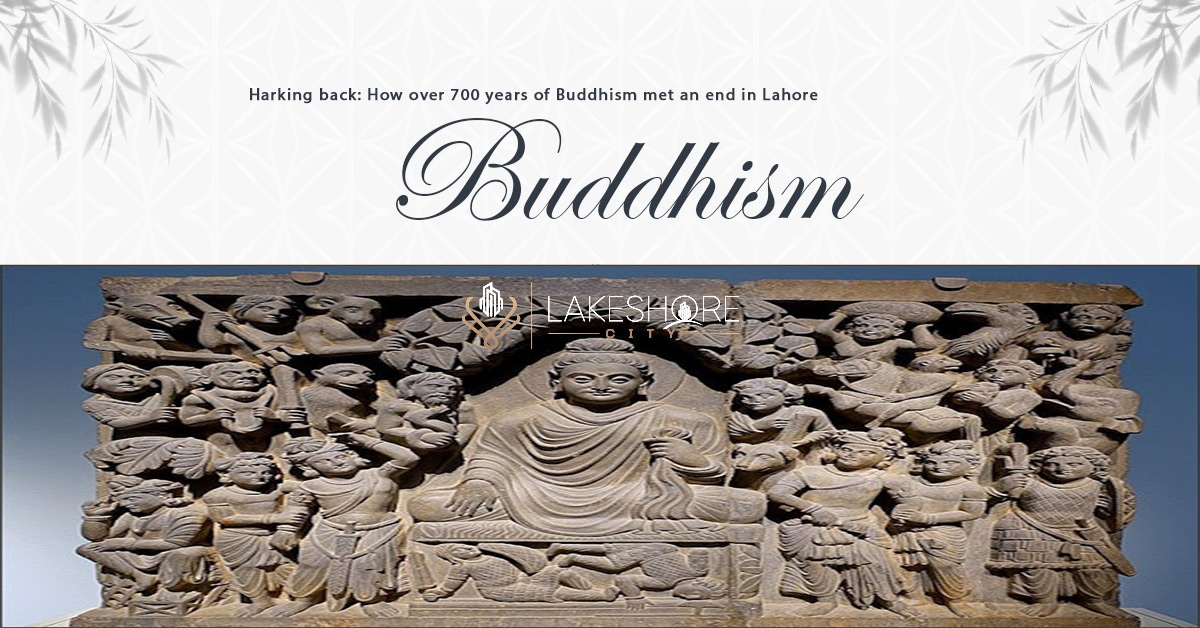The Buddhism birth, enlightenment, and death were honored on Vesak Day two weeks ago in Taxila’s Mohra Moradu Stupa by many pilgrims.
Gautama Buddha visited Lahore for three months on his way to ‘enlightenment’. From Buddhist sacred scriptures, he stayed in the southernmost part of the mud-walled city. Buddhist scholars say he stayed at Mohallah Maullian at Lohari Gate. This event fits when Lahore was Buddhist-only.
Briefly describe how the city became Buddhist. Like today’s religious scholars-priests, Brahmin aristocrats claimed a monopoly on religious laws and edicts during Buddha’s enlightenment. All laws had a conditional religious bent, and blasphemy might have you burned alive. Seems nothing has changed in our daily lives 2,500 years later. Such issues weigh down our Constitution.
The world was similar, and patricians monopolized religious knowledge in Rome. It appears that even religious change has not weakened the clerical castes. After the original Aryan invasions, when the king had full authority, the priests encouraged function division, usurping the ruler’s priestly duties. This was done by forming castes and priests guarding sacrifices, even of humans. All these subtle changes made monarchs scared to touch Brahmin priests.
Buddha, a prince by birth, sought the ‘truth’. It’s interesting that Punjab had reasonable behavior even then. Hebrew prophets were ‘prophesying’ while Iran’s Darius was purifying Zoroastrianism, the first ‘One Almighty’ god religion. The thinker Prince Gautam enjoyed life, but each bliss experience had diminishing results. After each encounter revealed him the dangers of aging, disease, and death, he began penance. He saw that Brahmin priests, like other priests, oppress and exploit.
He then walked the subcontinent without worldly anxieties, pondering for long hours and denying himself. Our readers should visit the Lahore Museum to see Gautama’s stunning statues to understand his physical transformation. The ‘Starving Buddha’ is the best. In college, my best friend and I would stare at the beauty of art.
Taxila and other Pakistani cities have sculptures of the great guy. Unlike Hinduism, which obliged people to worship Brahmans, Gautam believed mankind would find tranquility by not reincarnating. Real tranquility comes from denying worldly pursuits. It was not religious or theological. Without a deity, prayer, or priest, morality was required. This was groundbreaking for the subcontinent, where people converted themselves.
While the saint had introduced Buddhism, Chandragupta Maurya had conquered Lahore, the Punjab, and a huge section of the subcontinent. Chandragupta may have been a Greek-Indian soldier who rose to prominence as Greek influence declined. Greek-appointed governors were vanquished and a great empire was built. Chanakya, a Brahmin, was his chief counsel and outdid Machiavelli in ‘how to govern’ theory.
One concept resonated with him: the Brahmin priest’s power had to be undone for him to govern. Therefore, he followed Buddha’s rules. His grandson Asoka expanded the idea of living in peace after the Mauryan Dynasty expanded this basic idea. He sought serenity by becoming a Buddhist priest and emperor. In his time, wells, hospitals, and gardens were created.
Most intriguing was that the Punjab and its west became Buddhist. The Pali writings of that time revered Lahore because Gautama came and resided there. Asoka also created a mud road from Bengal to Taxila for horse-drawn carriages. People reverently went through Mohallah Maullian and neighboring streets in Lahore, a major pilgrimage location.
Most important is how long Buddhism lasted in Lahore? The Scythian nomad Kushans followed the Mauryans. Trajan, their most renowned king, was a Buddhist Greek who believed in Gautama but differed from the Buddha and Asoka. The subcontinental mentality believed in the ‘infinite’ while Greek thought was ‘finite’. A attitude that persists. In a twisted way that continues in India.
After the Terrible Plague in 167 AD, the Huns shocked Punjabi culture, especially Lahore. The last Hun, Mihirakula, whose capital city was Sialkot, disliked Buddhism after a Buddhist instructor declined to teach him due to his harshness. This son of Toramana the Hun destroyed all Buddhist monasteries and shrines in 523 AD. He purportedly turned to Shaivism, an extreme style of Hinduism practiced by India’s monarch.
Brahmin priests and their rulers regained faith. Ancient Lahore was virtually entirely Buddhist for almost 700 years. The seven major invasions destroyed Buddhist temples. The Gulsherbutt Temple in Salamatpura, Sheikhupura, is the only one near Lahore. The best are in Taxila and Inner Sindh.
We have another religion that ruled Lahore. Every new religion brought intolerance, exactly as the Lal Khoo near Mochi Gate, where Guru Arjan was imprisoned and Mian Mir prayed every day, is now “captured” by a money-grabbing priest. How dare anyone dispute his new domain? When in power, all beliefs trump reason. This has happened for millennia.
Our Featured Article:
Read More: Archaeologists Unearth Buddha Statue in Ancient Egyptian City
Don’t miss the chance to invest with Lakeshore! Secure your investment today by investing your financial investment with Lakeshore in the following available options like Lakeshore City, Lakeshore Club, and Lakeshore Farms.
For More updates, please Contact +92 335 7775253 or visit our website https://lakeshorecity.com/
Lakeshore City is the upcoming elite lifestyle at Khanpur Dam. Offering no parallel amenities for the members and owners of distinguished farmhouses.
Become Part of Luxurious Lifestyle
Contact: 0335 7775253



